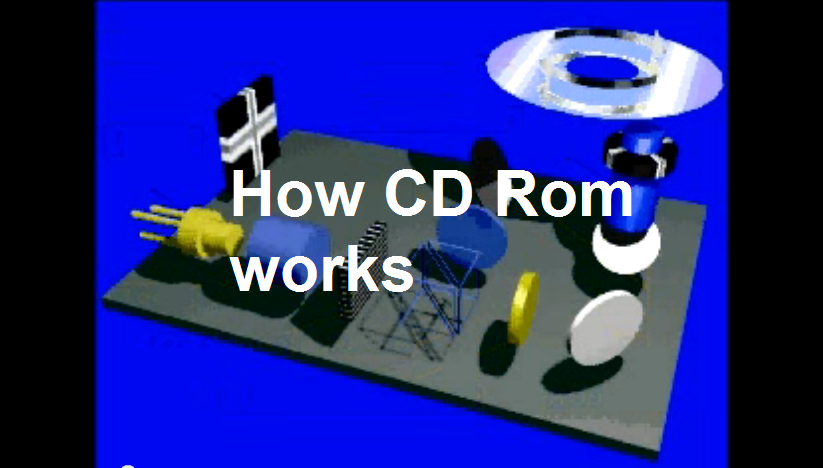Main menu
You are here
How CD ROM works (Animated video)
How CD ROM works (Animated video)

CD-ROM (Compact Disc, read-only-memory) is an adaptation of the CD that is designed to store computer data in the form of text and graphics, as well as hi-fi stereo sound. The original data format standard was defined by Philips and Sony in the 1983 Yellow Book. Other standards are used in conjunction with it to define directory and file structures, including ISO 9660, HFS (Hierarchal File System, for Macintosh computers), and Hybrid HFS-ISO. Format of the CD-ROM is the same as for audio CDs: a standard CD is 120 mm (4.75 inches) in diameter and 1.2 mm (0.05 inches) thick and is composed of a polycarbonate plastic substrate (underlayer - this is the main body of the disc), one or more thin reflective metal (usually aluminum) layers, and a lacquer coating.
The Yellow Book specifications were so general that there was some fear in the industry that multiple incompatible and proprietary formats would be created. In order to prevent such an occurrence, representatives from industry leaders met at the High Sierra Hotel in Lake Tahoe to collaborate on a common standard. Nicknamed the High Sierra Format, this version was later modified to become ISO 9660. Today, CD-ROMs are standardized and will work in any standard CD-ROM drive. CD-ROM drives can also read audio compact discs for music, although CD players cannot read CD-ROM discs.

